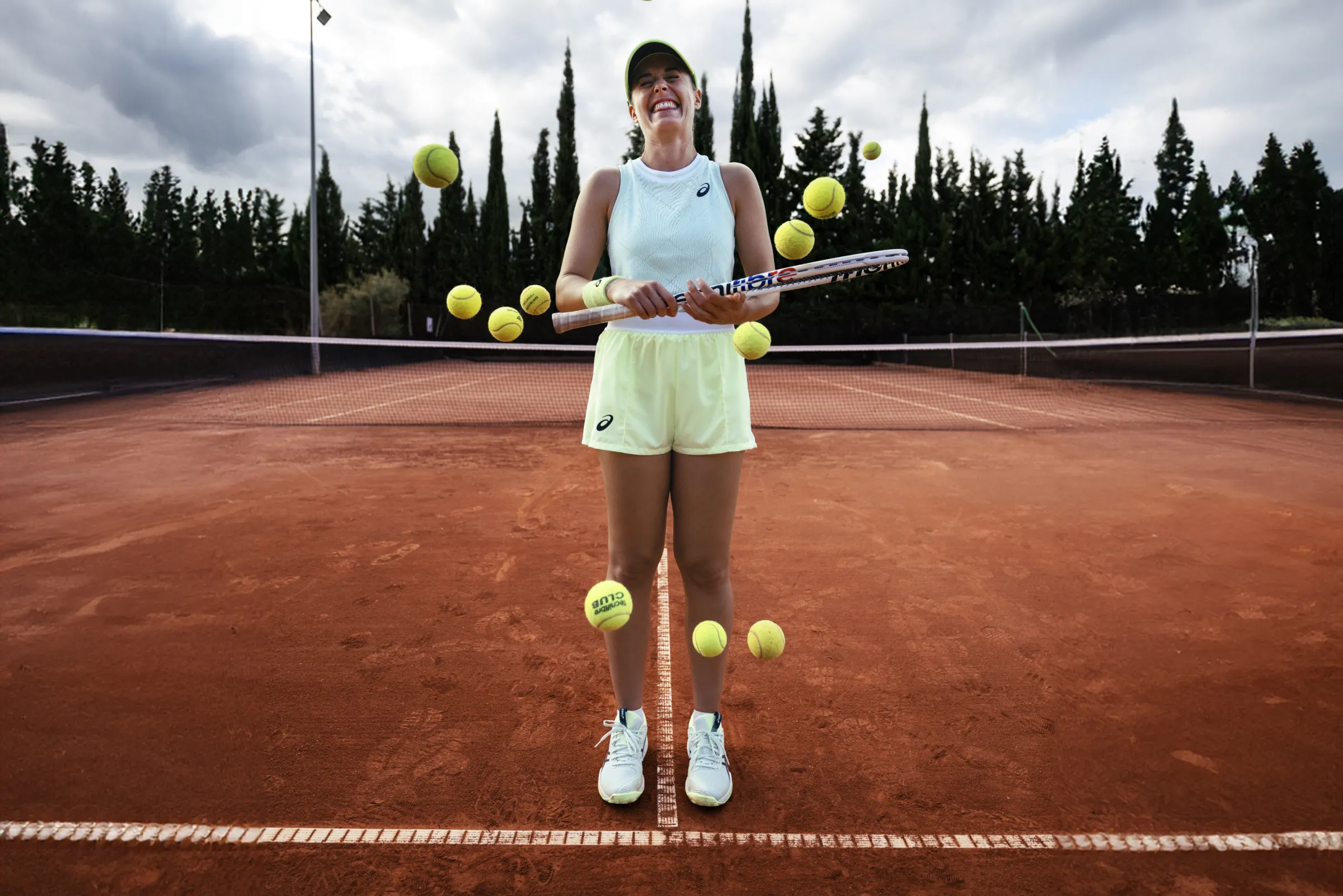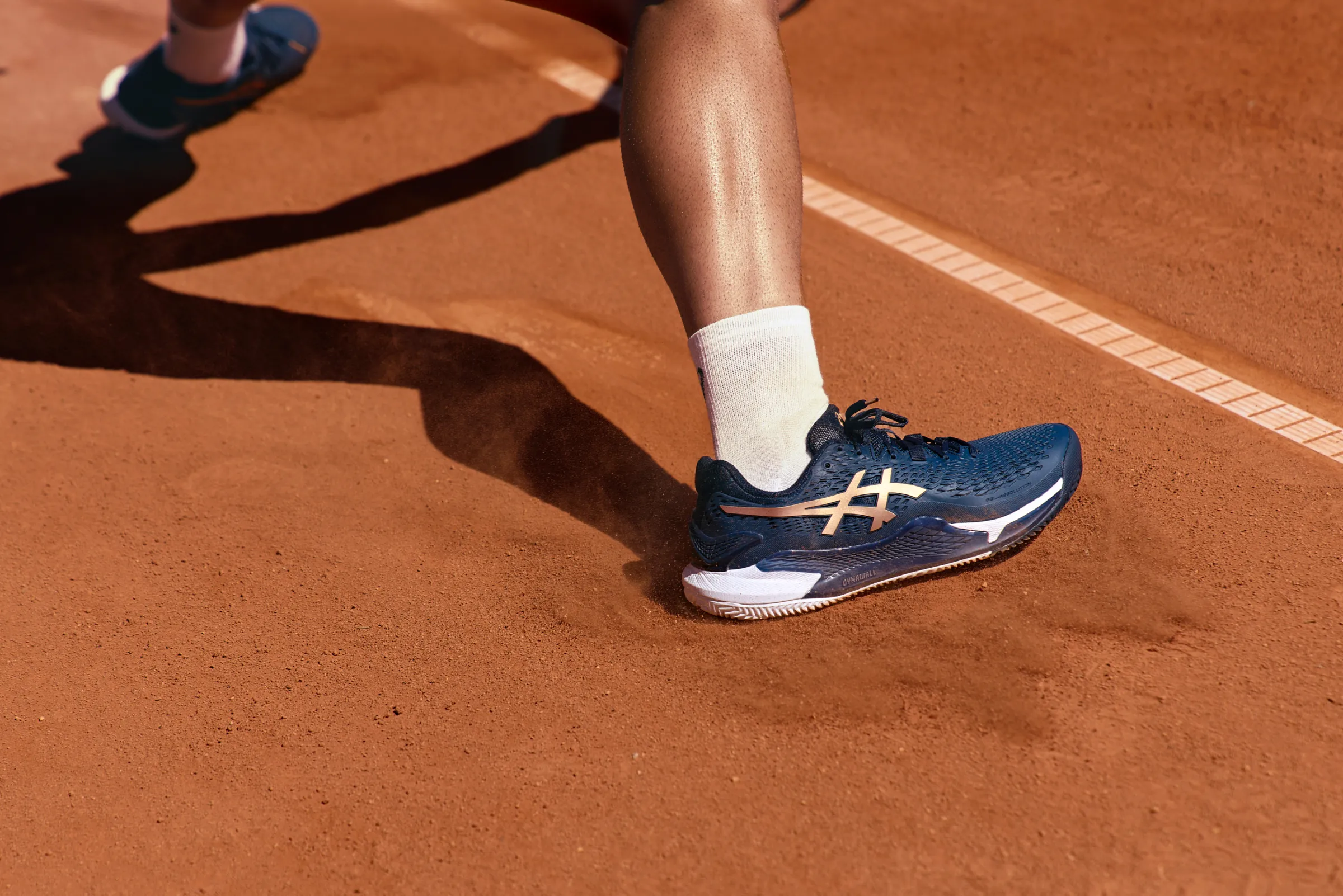
Improve Your Tennis Game with These Tips
June 20, 2024
Whether you're new to the sport or you've been playing for years, it is possible to seize opportunities for improvement when it comes to your tennis game. There are many ways to positively impact your skills, ranging from mastering a weakness and improving your nutrition to cross-training and wearing the correct gear. Even something seemingly small like focusing on your mental health and remaining positive may help you become a better athlete on the court. Consider these seven tips to improve your tennis game that you can begin today.

1. Focus on quality over quantity.
Come to each practice session with a purpose. Focusing on the quality of your serves, footwork, and strokes typically yields much better results than practicing for several hours each day of the week without a specific goal or the right techniques. Each time you hit the court, come with a plan and a purpose to see improvement. By showing up to each session with a plan, you may find that you are able to train better and smarter. Maybe your backhand slice needs improvement. If that is the case, begin practice with an intentional objective to correct that stroke with the right grip, stance, and swing so that you can get underneath the ball and create an effective topspin. Rather than hitting the ball over and over again and just hoping for the best, you'll potentially gain more by hitting the ball fewer times but deliberately focusing on that stroke and making appropriate adjustments every time.

2. Seek both lower-level and higher-level training partners.
Some experts suggest practicing tennis with players who are better than you, while others recommend training with partners who are still developing. The truth is there are advantages to playing with both types of people. When you play against someone with an extraordinary skill set, it often forces you to focus harder and make better decisions when you react — essentially, you're playing defense. It may also help you prepare mentally for those matches and tournaments in which you inevitably face a strong opponent. On the other hand, playing a lower-level player may often help you improve your offensive skills. Rather than simply trying to keep up with them, you can practice skills that allow you to overwhelm an opponent. You’ll likely have more opportunities to take risks and practice decision-making skills as well, all of which may help increase your confidence when you come against a stronger opponent.
3. Prioritize your nutrition.
Paying close attention to your food intake and overall nutrition may often improve your energy level both at practice and during matches and tournaments. The United States Tennis Association (USTA) recommends incorporating whole grains, lean proteins, fruits, vegetables, and healthy fats into your daily diet. Its recommendation for practice and match days includes eating a meal packed with healthy carbohydrates, protein, and fats about three to four hours before you play. Between an hour and 15 minutes before you play, the USTA suggests eating a snack that is high in carbohydrates. During your match or practice, consider having a snack with about 30 to 60 carbohydrates for every hour you participate. Afterward, have another high-protein, high-carbohydrate snack, and within two hours of finishing, eat another meal that is filled with healthy carbohydrates, protein, and fats.

4. Play at different times of day in unique environments.
Variety has advantages, and if your schedule allows you to do it, try practicing at various times and in different locations. Play in the morning when it's cold, play in the dark, play indoors, play when it's windy outside, and play in conditions that challenge you to reach beyond your current comfort level. By diversifying your environment, you have the opportunity to become a more versatile and flexible player who understands how to adapt to the various challenges you'll encounter in different matches and with different opponents.

5. Maintain a positive mindset.
While the physical aspects of your tennis game are essential, maintaining the right mental outlook is just as imperative to excel in your sport, particularly when you play competitively. Staying positive when you lose a match or have a challenging training session, for instance, may help you become a resilient athlete who has the mental strength to see each match loss or challenge as a learning experience you can use for continued improvement. Some tips for staying positive include maintaining perspective, focusing on positive self-talk and the determination needed to improve the weaker areas of your game, and maintaining the same post-match routine, whether you win or lose.
6. Work various cross-training activities into your regular weekly routine.
Cross-training allows you to incorporate workouts into your training program that go beyond focusing on your tennis skills. Doing this may help you improve your overall fitness levels, boost your cardiovascular endurance, strengthen muscles that you may not often use while playing tennis, help prevent injuries, allow your body time to recover from playing tennis, and help improve your mental engagement or prevent you from becoming bored with tennis. Some effective cross-training workouts for tennis players include jumping rope to help with your footwork, running to improve endurance and strengthen leg muscles, doing Pilates for core strengthening, and swimming for a low-impact workout that may help with injury recovery and cardiovascular health.

7. Purchase the right gear at the right time.
Several factors go into choosing the right tennis shoes for your game, including the way you play and the shape of your foot, but you can also follow some basic rules that apply to tennis players overall. First, consider shoes made specifically for tennis players, such as the COURT FF™ line of tennis shoes for men and women. Tennis shoes are built for lateral movement and durability compared to running shoes, which are designed primarily for forward motion. Next, match the outsole to the type of court on which you play. Playing on a demanding hard court means choosing a shoe that's extra durable and has a strong grip, such as a modified herringbone pattern on the outsole. A clay court shoe with a full herringbone pattern on the outsole, as you'll find with the SOLUTION SPEED™ FF 3 CLAY tennis shoes, is designed to provide excellent grip and traction since clay doesn't get easily caught in the pattern. Tennis shoes for grass courts that have an outsole with small nubs that help prevent slippage. The USTA recommends buying a new pair of shoes for every 45 to 60 hours of tennis you play or when you notice signs like soreness in your feet and ankles or reduced traction on the court.
Improving your tennis game requires both mental and physical dedication on and off the court, but the results are often well worth the effort. Even just making some of these changes might lead to noticeable improvements that you can carry with you throughout your tennis career, helping you win matches and tournaments and renewing your passion for the sport.
Please note: The information contained herein is for informational purposes only and does not contain or constitute medical advice or a medical opinion. Always consult with your qualified and licensed medical professional prior to beginning or modifying any diet or exercise program.